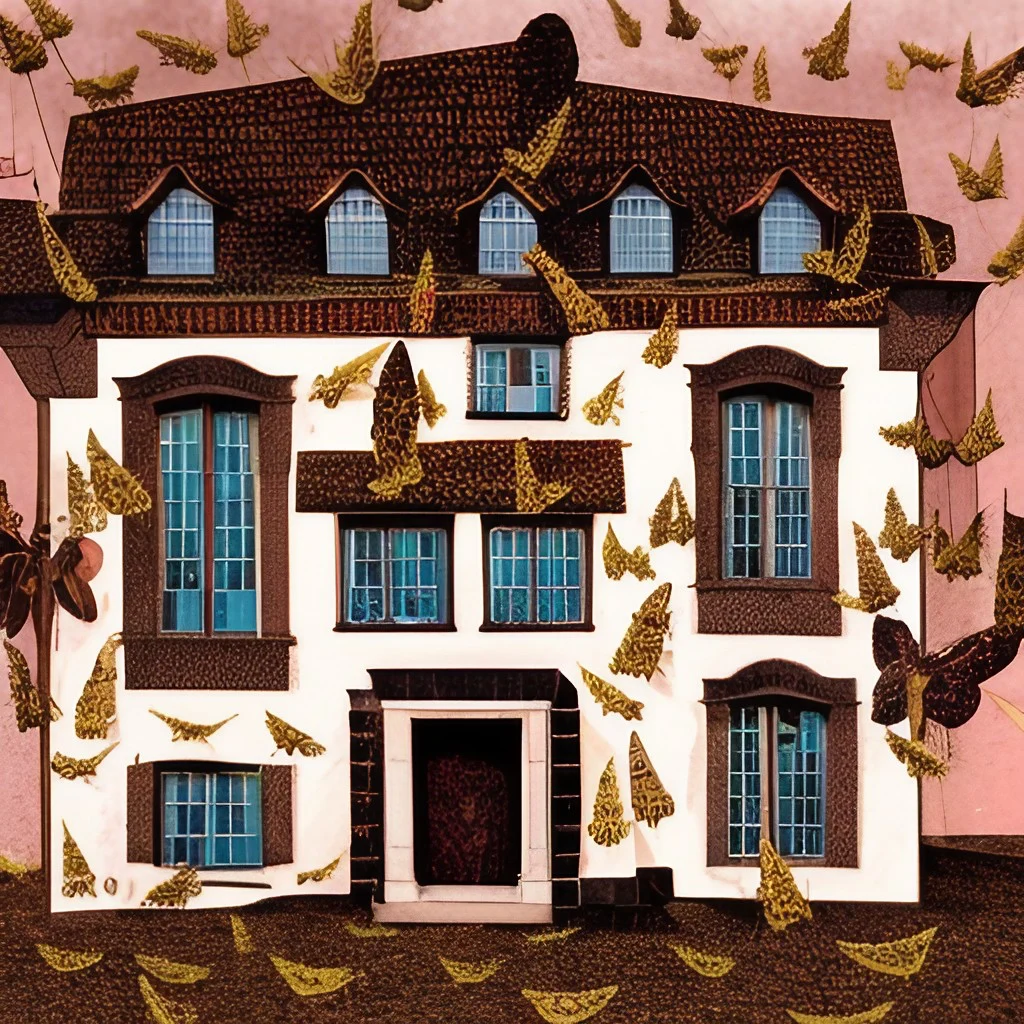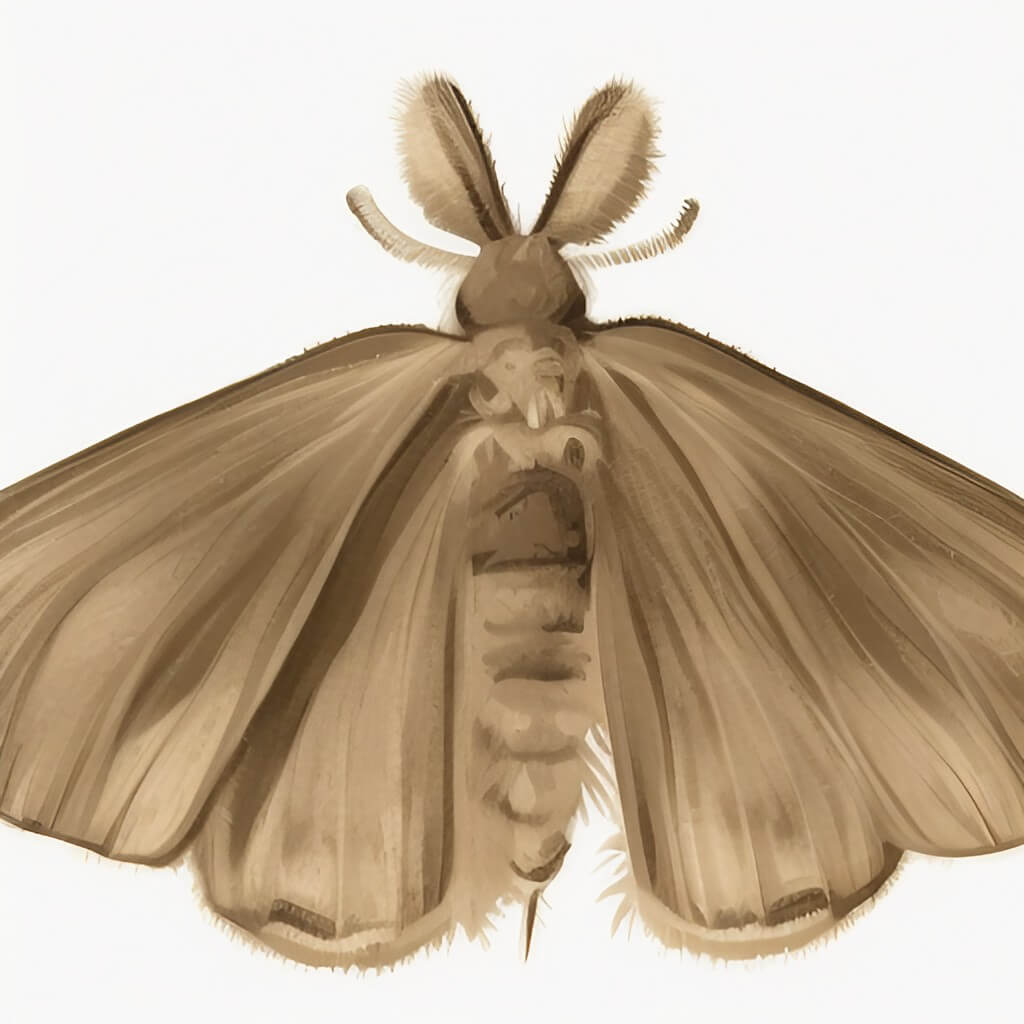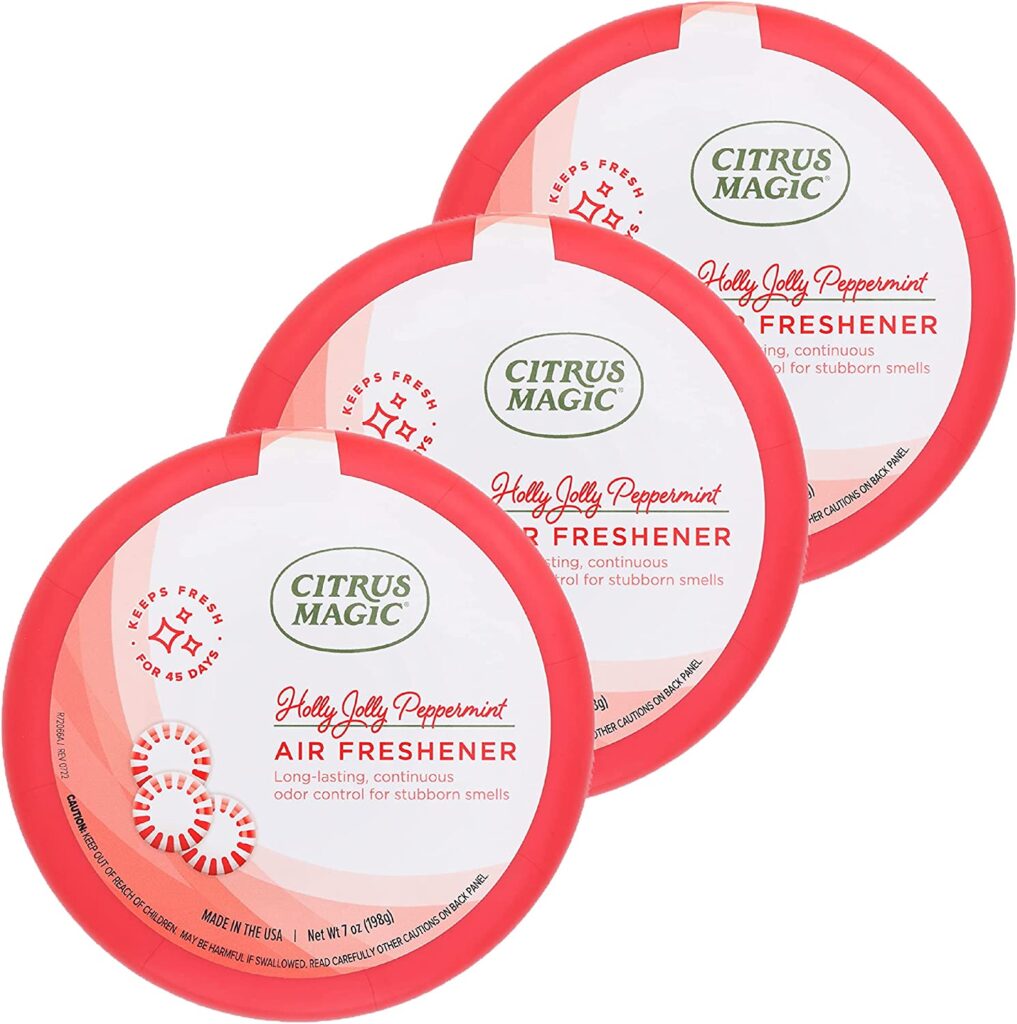How to Get Rid of Miller Moths in Colorado

Miller moths are a common – but unwelcome – sight in Colorado, especially during the summer months. But how the heck do you get rid of Miller Moths?
Miller Moths are known for their large wingspan and yellowish-brown coloring, and they migrate from eastern Colorado to the Front Range each year. Miller moths can be a nuisance in households, as they can damage food supplies, contaminate surfaces with their droppings, and be difficult to get rid of. On top of that, they are just gross and can take over an area.
For us, that tends to be our front porch. With the bright lights on the front patio – they are drawn to it like, well, moths to a flame. So, how can you get rid of them? Keep reading out quick guide to getting rid of Miller Moths (especially in Colorado).
Quick Solution to get rid of Miller Moths

Want the :tldr (too long, didn’t read?)
This is an easy one… buy this air freshener and put it where you are getting tons of Miller Moths. These moths hate the smell of peppermint and will stay away (it’s not actually that they don’t like peppermint, the scent actually overpowers their sense of smell, so they avoid it.
We put one of these bad boys under our couch on the front porch. This keeps the miller moths away - super simple, but it works!
Yes, it’s that easy to get rid of Miller Moths. We place this under our Outer Sofa (read our Outer Furniture Review)
About Miller Moths

During late May and early June, Miller moths can be seen in Colorado. These moths migrate from eastern Colorado as well as from further east in Kansas and Nebraska. They are scientifically known as Euxoa auxiliaris and are sometimes referred to as pantry moths.

These moths are actually the adult stage of the army cutworm, which spends most of its life cycle as a caterpillar in the soil. As caterpillars, they feed on grasses, plants, and crops. Miller moths are attracted to bright lights and enter homes through open windows or doorways. In other words, Miller Moths avoid daylight.

During the warm summer months, moths migrate to higher elevations in search of flowering plants. Due to their proximity to the mountains, residents of Fort Collins, Loveland, Windsor, and the rest of the Front Range are fortunate to see plenty of these pests. Miller moths are primarily active at night and tend to seek shelter before dawn.
Changes in weather patterns can have a significant impact on the abundance of miller moths. For example, during periods of drought or extreme heat, miller moth populations may decrease due to lack of food sources or unfavorable conditions for reproduction. On the other hand, periods of heavy rain or cooler temperatures can lead to an increase in miller moth populations as these conditions provide more favorable environments for reproduction and growth.
Why is the Miller moth bad this year?

According to experts at Colorado State University, the amount of moisture in the areas where moths live is a crucial factor. When there is higher moisture, there are more spring and early summer blooms, which means moths have more natural sources of food and are less likely to rely on flowering plants in landscaped areas. In years with an abundance of natural food sources, the moth population is more widespread and not confined to urban areas, making them less noticeable.
They tend to be most active at night, and their presence can cause food contamination, damage to fabrics or carpets, and other problems.
The bad news is that this year, 2023, is predicted to be a bad year for the Miller Moths.
How to get rid of Miller Moths

The good news is that there are several ways to eliminate Miller moths.
One of the most effective solutions I have found how to get rid of Miller Moths is using peppermint air fresheners. The strong scent of peppermint helps repel these moths, making them less likely to enter your home in the first place. To use this method effectively, you should hang air fresheners near windows or doors where Miller moths may enter your home.
We put one of these bad boys under our couch on the front porch. This keeps the miller moths away - super simple, but it works!
On our front porch, we have used one of these air fresheners a Citrus Magic Peppermint Air Fresher – and simply placed it under an outdoor sofa we have. We replace it every few weeks to ensure the scent remains strong enough to repel the moths.
The strong scent of peppermint acts as a natural deterrent for Miller moths. Moths have highly sensitive olfactory receptors, and the strong aroma of peppermint confuses and repels them. The scent masks the pheromones emitted by the moths, making it difficult for them to navigate and find suitable breeding grounds in your home.
Citrus Magic Holiday Odor Absorbing Solid Air Freshener, Peppermint
Other Methods of getting rid of Miller Moths
In addition to using peppermint air fresheners, there are other methods you can try if you’re dealing with a Miller moth infestation.

The easiest is simply to turn off the lights at night.
Also, wiping window tracks with orange or lemon essential oil every couple of weeks is another effective deterrent for keeping them out of your house.
You can also set up traps using DIY or OTC products that attract miller moths so that you can easily remove them from your home once they’ve entered it – but I’m not a huge fan of these.
Finally, you can simply swat or vacuum them as soon as you spot them inside your home – although this method may not be suitable for everyone!
What about miller moth eggs?
Most miller moths are migratory – they lay eggs in one spot and typically travel to another place after they lay eggs (and after the eggs hatch and a miller moth emerges).
Just to remind you, if you forgot basic biology. These bad boys go Egg -> Caterpillars -> Cocoon -> Moth.
The army cutworm is a pest that feeds on grain crops after it emerges and during spring, causing the most damage at this time. Later, in mid-spring, the cutworm pupates and becomes a miller moth. The miller moth flies to higher elevations to feed on nectar and then returns home to lay eggs.
Final thoughts about how to get rid of miller moths
In the end, it’s pretty simple: turn off the lights at night and use a peppermint air freshener, like this one:
We put one of these bad boys under our couch on the front porch. This keeps the miller moths away - super simple, but it works!
If you’re dealing with Miller moths around your home in Colorado, I hope these tips help! Remember that prevention is key – by taking steps such as using peppermint air fresheners before an infestation occurs, you will be able to keep these pesky critters away from your property more easily than trying to get rid of them after they have already invaded it.
Miller Moths – FAQs
Miller moth season typically lasts for a period of several weeks, with the peak activity occurring from mid-May to mid-June in the affected regions. However, it’s important to note that the exact duration of the season can vary depending on various factors such as weather conditions and geographical location.
A: While Miller moths are commonly associated with Colorado, they are also found in other states within the plains region, including parts of Nebraska, Kansas, Wyoming, and New Mexico. However, the intensity and duration of their presence may vary in these areas.
Getting rid of Miller Moths permanently can be a tricky task. The first step is to identify where they are coming from and seal off any potential entry points. This could include cracks in door or window frames, holes in screens, and other small openings.
Once you have identified the source of the moths, there are several methods you can use to get rid of them. Swatting and vacuuming up miller moths remain primary means of attack. You can also set up traps by suspending a light bulb over a bucket partially filled with soapy water; the moths will be attracted to the light and fall into the water and die.
In addition to these physical removal methods, there are also some natural repellents that can help keep them away from your home. Oils such as cedarwood, lavender, peppermint, clove, and eucalyptus are known to repel moths. You can spray these oils around your home or purchase products that contain them to create an effective barrier against miller moths entering your home.
Vinegar is a commonly suggested natural remedy for repelling and killing insects, including moths. However, when it comes to Miller moths, vinegar is not an effective method for eliminating them. While vinegar may have some deterrent properties, it is unlikely to kill Miller moths or provide a long-term solution for infestations.
What keeps Miller moths away is…peppermint air fresheners! Yep, you read that right – those fluttery pests can’t stand the smell of peppermint, making it an easy way to repel them from your living space.
Now, we know some of you might be skeptical. “Peppermint air fresheners?” you might be asking. “Are you pulling my leg?” But we’re not kidding – peppermint is a natural deterrent for Miller moths, and it actually works. So, next time you’re at the store, grab a few peppermint air fresheners and scatter them wherever you see Miller Moths. Your nose (and your moth-free space) will thank you.
First off, what causes moth infestations outside is…moths! I know, I know, shocking stuff here. But seriously, moths are naturally drawn to the great outdoors, so it’s no surprise when they start hanging out around your patio furniture or outdoor lighting.
But it’s not just the moths themselves that cause an infestation – it’s their life cycle. Moths lay their eggs in shady, protected areas, which then hatch into larvae that feed on fabrics, grains, and other organic matter. So, if you leave your outdoor furniture or potted plants outside year-round, you could be creating a nice, cozy environment for moth larvae to thrive.
Now, as for what you can do to prevent or control a moth infestation outside, there are a few things to keep in mind. For starters, try to keep your outdoor space clean and tidy, removing any piles of leaves or plant debris that could provide a home for moth larvae. You may also want to consider using outdoor lighting that’s low on the brightness scale, to avoid attracting moths in the first place.
Miller moths are an annual phenomenon that typically takes place between late spring and early summer. During this time period, these moths emerge from their overwintering sites, mainly in the plains of eastern Colorado and neighboring states, commencing their migration to higher altitudes. As they move, they populate other areas in America throughout the course of their journey.
The most notable concentration of Miller moths is observed in Colorado and the surrounding states due to the abundance of ideal breeding grounds and habitat for them. Nonetheless, even though their presence is more significant in these areas, they can travel rather long distances during their expedition. The duration of Miller moth season may depend on several factors like geographical location or weather conditions, but its peak activity usually occurs between mid-May and mid-June.
In conclusion, Miller moths are a fascinating species that undertake yearly migrations around certain parts of North America during a specific season usually lasting from late spring to early summer.
You can put peppermint air freshener outside to help keep moths away. Peppermint is a natural insect and arachnid repellent, and it’s been found to be the best thing we’ve found to help keep moths away.
Miller moths are not destructive in and of themselves, but their caterpillar stage, the army cutworm, can damage a variety of crops. The caterpillars feed on grasses, grains, vegetables, flowers and other plants. They are especially damaging to alfalfa and wheat fields.
Miller moths are generally not considered destructive pests. Unlike some other moth species, Miller moths do not feed on fabric, damage structures, or cause direct harm to humans or pets. However, their presence can still be a nuisance and inconvenience for homeowners during their active season.
Fortunately, miller moths do not reproduce indoors, and they do not cause any structural damage to homes or buildings.
Original post here: How to Get Rid of Miller Moths in Colorado


Comments
Post a Comment